Best volume pedals 2025: control your tone with these essential pedal picks
It might get loud! Our pick of the best volume pedals from Mission, Ernie Ball, Lehle and more
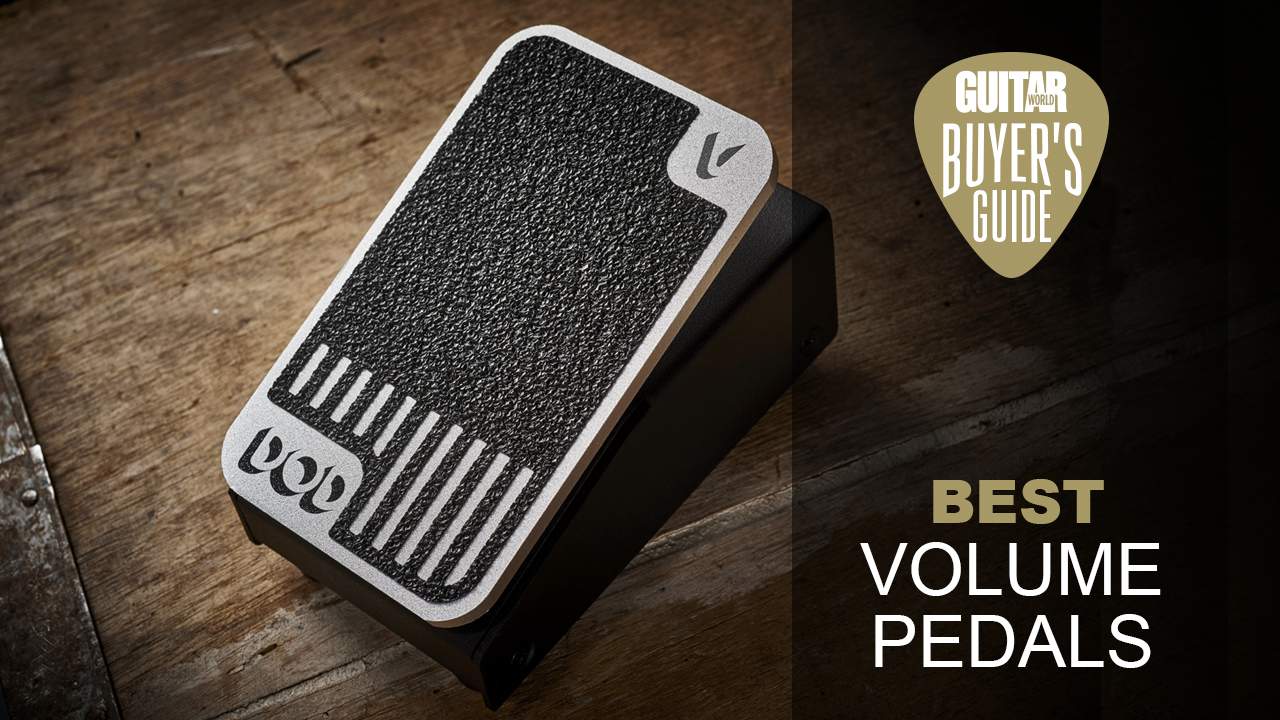
Choosing to invest in one of the best volume pedals might be the most practical purchase you make, and something you’ll no doubt thank yourself for later down the line.
There are loads of ways that incorporating a volume pedal into your rig can improve not just your tone, but your way of playing. It can be used practically, as master volume, either boosting for solos, or backing off for quieter parts, or as a way of adding expression into your playing via volume swells.
However you’re looking to use one, picking one of the best volume pedals will make sure that your tone remains pure, you get a nice, smooth volume sweep and it’s built well enough to withstand your weight as you press down on it. These pedals usually have to withstand a little more wear and tear than your other stompboxes.
You might think that they’re all made equally, but there are lots of different models out there, all offering various features at different price points. That’s where myself and the Guitar World team come in – we’ve done our research and picked out the best volume pedals currently on the market.
But if you want to know my top pick, we've gone for the five-star Lehle Mono volume pedal. it's built to last, it's versatile and has a +10dB boost.
If you'd like to find out more about volume pedals, take a look at the FAQ section to find out more information about this handy pedalboard addition.
The quick list
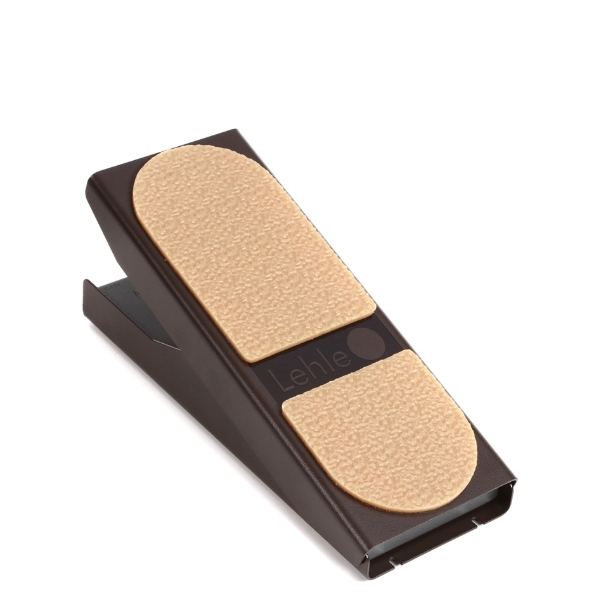
We'll admit that the Lehle Mono Volume Pedal isn't cheap, but if you want something that's a smooth operator, low noise and will stand the test of time, it doesn't get better than this.
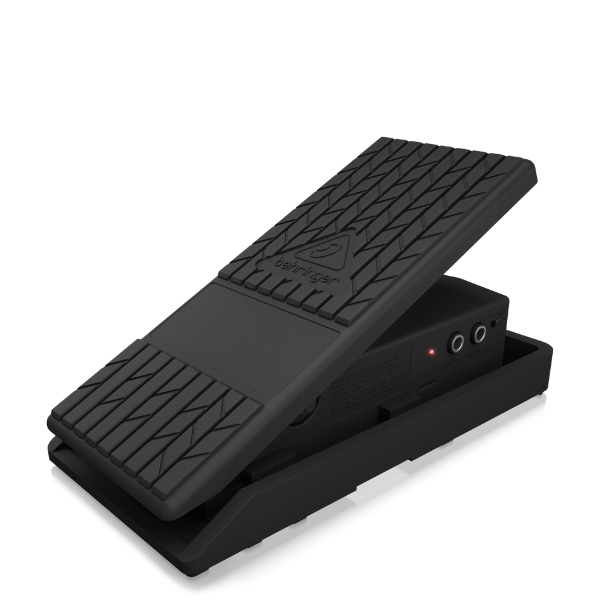
Volume pedals can get pretty expensive, but if you need something on a budget, the Behringer FCV100 offers reliable performance at a less eyebrow-raising price point.
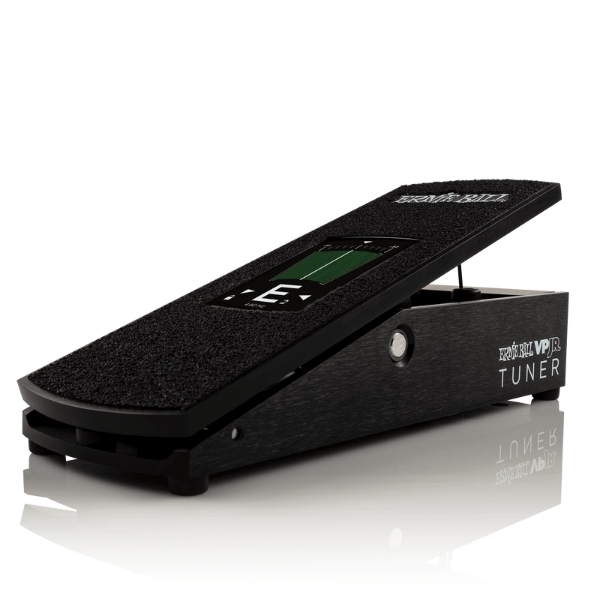
This multi-role pedal covers both volume and tuning duties, making the Ernie Ball VPJR one of the most versatile volume pedals out there. We love the multiple color options too.
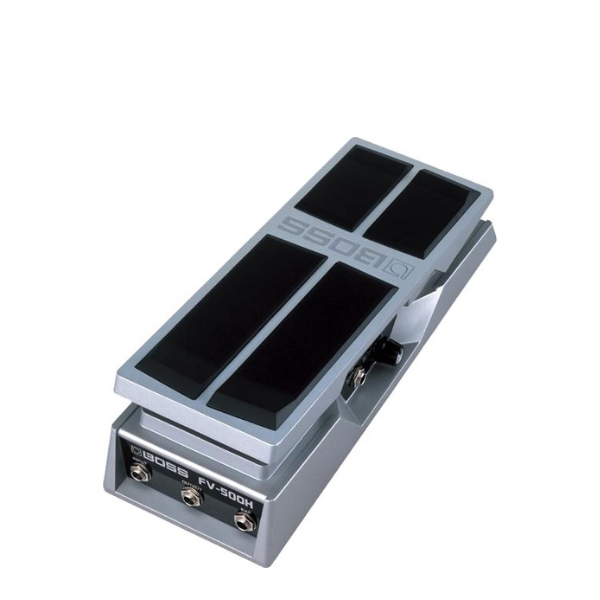
A passive volume pedal saves you a precious slot on your pedalboard power supply, which makes the Boss FV-500H a fantastic choice for the power-hungry guitar player.
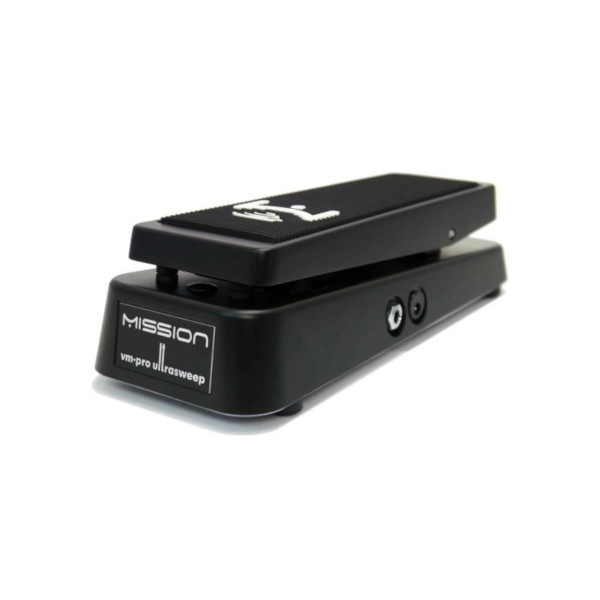
The Mission Engineering VM-Pro is an excellent, feature-rich volume pedal with a robust design. It's a pro-level option if your budget will stretch that far, but it's well worth the asking price.
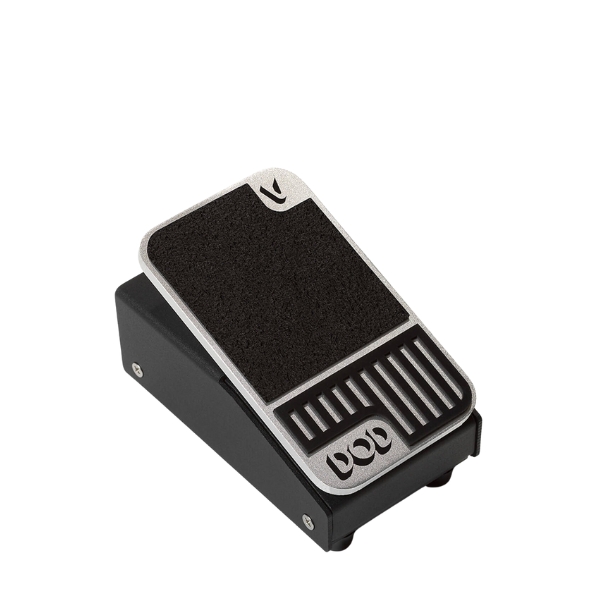
Volume pedals take up a lot of room, so if you've got a busy 'board, then the DOD Mini Volume won't encroach too much on your setup, whilst still providing top-tier performance.
Best overall
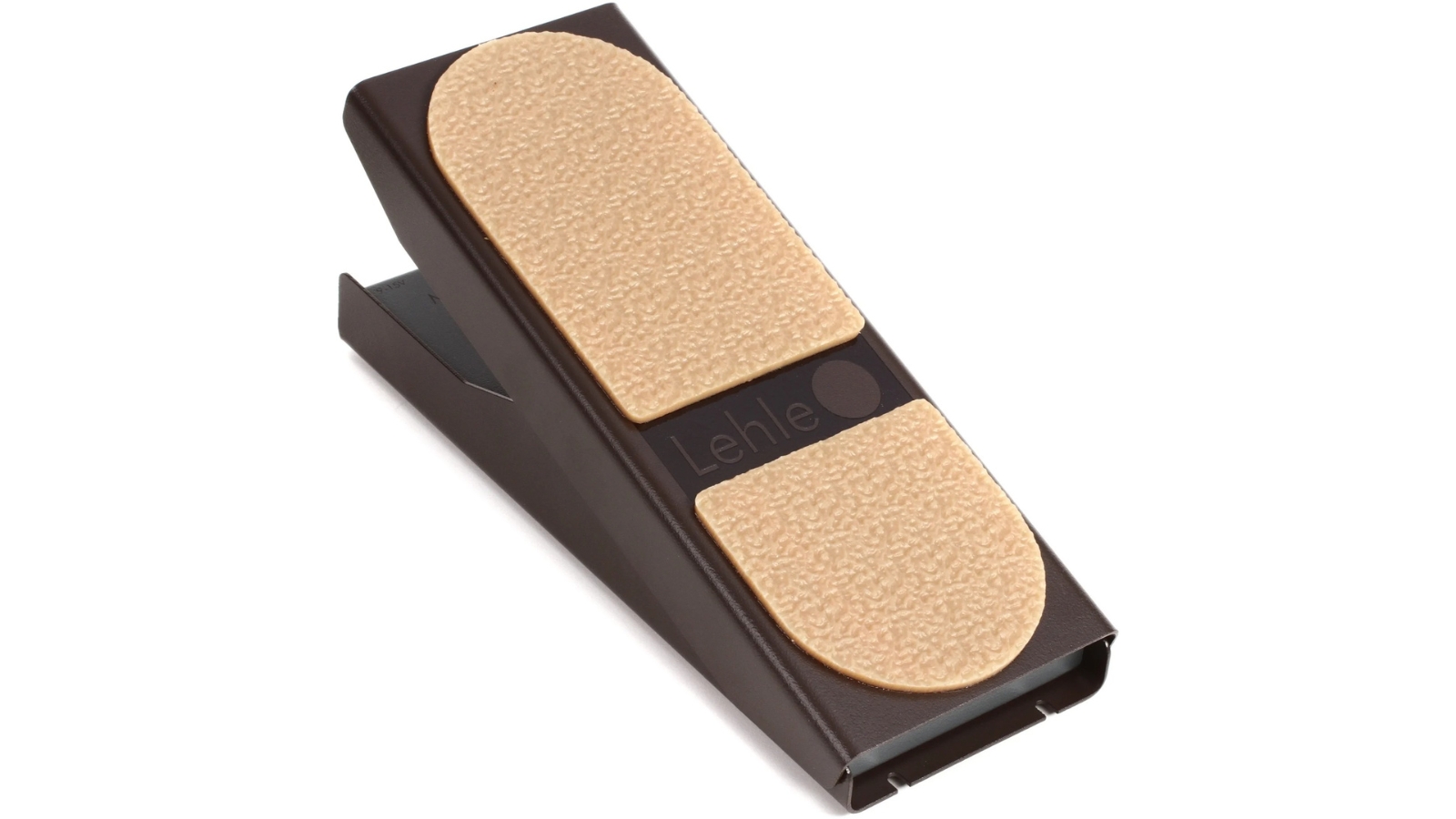
1. Lehle Mono Volume Pedal
Our expert review:
Specifications
Reasons to buy
Reasons to avoid
✅ Buy if you want to give your playing a hefty boost: The Lehle Mono's gain control gives you up to 10dB of pure volume.
❌ Avoid if you're on a tight budget: If you want volume, you got it, but that comes at a steep price for a pedal.
If you want the best of the best, the Lehle Mono Volume Pedal is about as good as it gets. Combining precise control with fantastic build quality and some handy extra features, this powerful pedal takes a different approach from its competitors, producing excellent results.
Unlike most volume pedals, which use a potentiometer, the Lehle design features a magnet-controlled VCA, which offers much-improved performance. Instead of the many moving parts of a potentiometer, this pedal only moves a magnet, with a sensor measuring the distance. This means increased control and no hissing or humming sounds.
We’ll admit it’s expensive for a volume pedal. But it works phenomenally well. There’s no signal loss at all and no noise that we could perceive, either. The gain knob takes you from -92dB all the way to +10dB, offering a hefty boost if you need it.
There’s also a direct out if you want to run two amps or plug into a DI when playing live. If you run a stereo rig, check out the Stereo version, which shares the same features but across stereo channels.
Best budget pedal
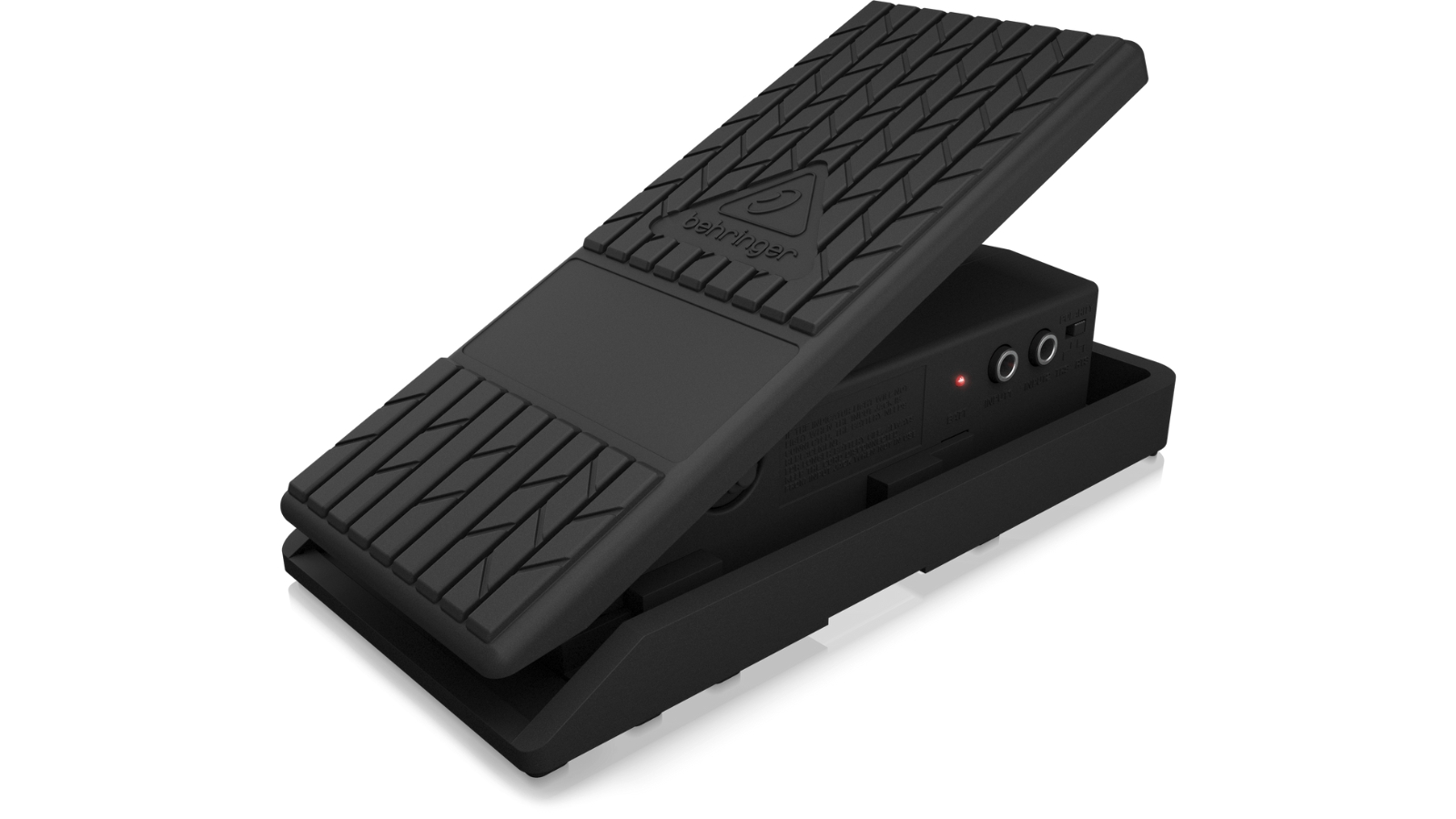
6. Behringer FCV100
Our expert review:
Specifications
Reasons to buy
Reasons to avoid
✅ Buy if you want a cheap and cheerful volume pedal: The FCV100 is an absolute steal for the price and performs very well indeed.
❌ Avoid if you have more cash to splash: Spending more will reward you with a better pedal, but at this price, it's hard to be too critical.
If you’ve been scrolling through this article and raising your eyebrows at some of the pricing, then the Behringer FCV100 will offer you some solace. As with most Behringer gear, it’s priced exceptionally low, making it the perfect option for players on a budget.
It functions as a dual volume/expression pedal and can operate one stereo instrument or two mono instruments if you wish.
The treadle angle is absolutely huge too which some players find a little uncomfortable when playing standing up, although it does give you a lot of control over the sweep of your foot.
It’s made of plastic but feels very sturdy, certainly hardy enough to put up with live shows. A minimum volume setting lets you use it as a gain control or as a pure volume control, and it will take either a 12v power supply or a 9v battery for power.
For the money, you’ll be hard-pressed to find such a feature-rich pedal for your volume control needs.
Best for versatility
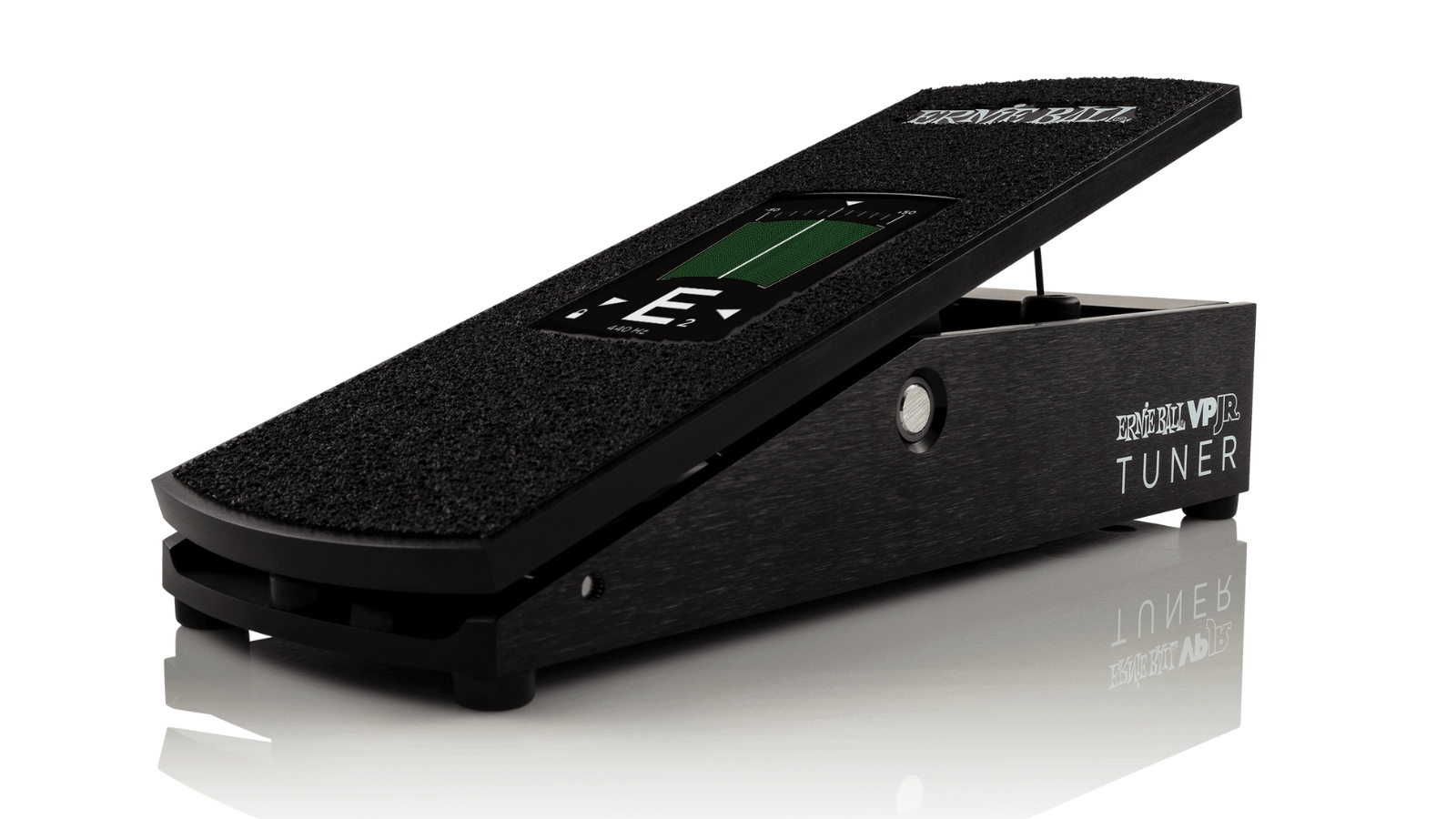
Specifications
Reasons to buy
Reasons to avoid
✅ Buy if you want a truly versatile pedal: With touchscreen controls and excellent presentation, the VPJR also doubles as a tuner.
❌ Avoid if you just want volume: The twin nature of the VPJR is great, but it won't suit everyone's pedalboards.
Taking volume pedals firmly into the future, the Ernie Ball VPJR features touchscreen functionality and a tuner to help you save space on your pedalboard. With a rugged build quality and a range of colors, it’s a great choice as a multi-role pedal for your ‘board.
The touchscreen display is incredibly bright, so there won’t be any issues seeing it on dark stages. With the heel down it displays the tuner and once you start moving it upwards it tells you a volume level, with 10 displaying the toe fully up position. Think of it as a speed-o-meter for your sound.
A double tap on the screen opens up options for running it as a volume pedal or tuner only, but most players will run it in the dual tuner/volume setting.
It also allows you to set your reference for the tuner and set the treadle as a volume or gain control. A built-in FX loop just adds to the functionality, making the VPJR one of the most versatile volume pedals out there.
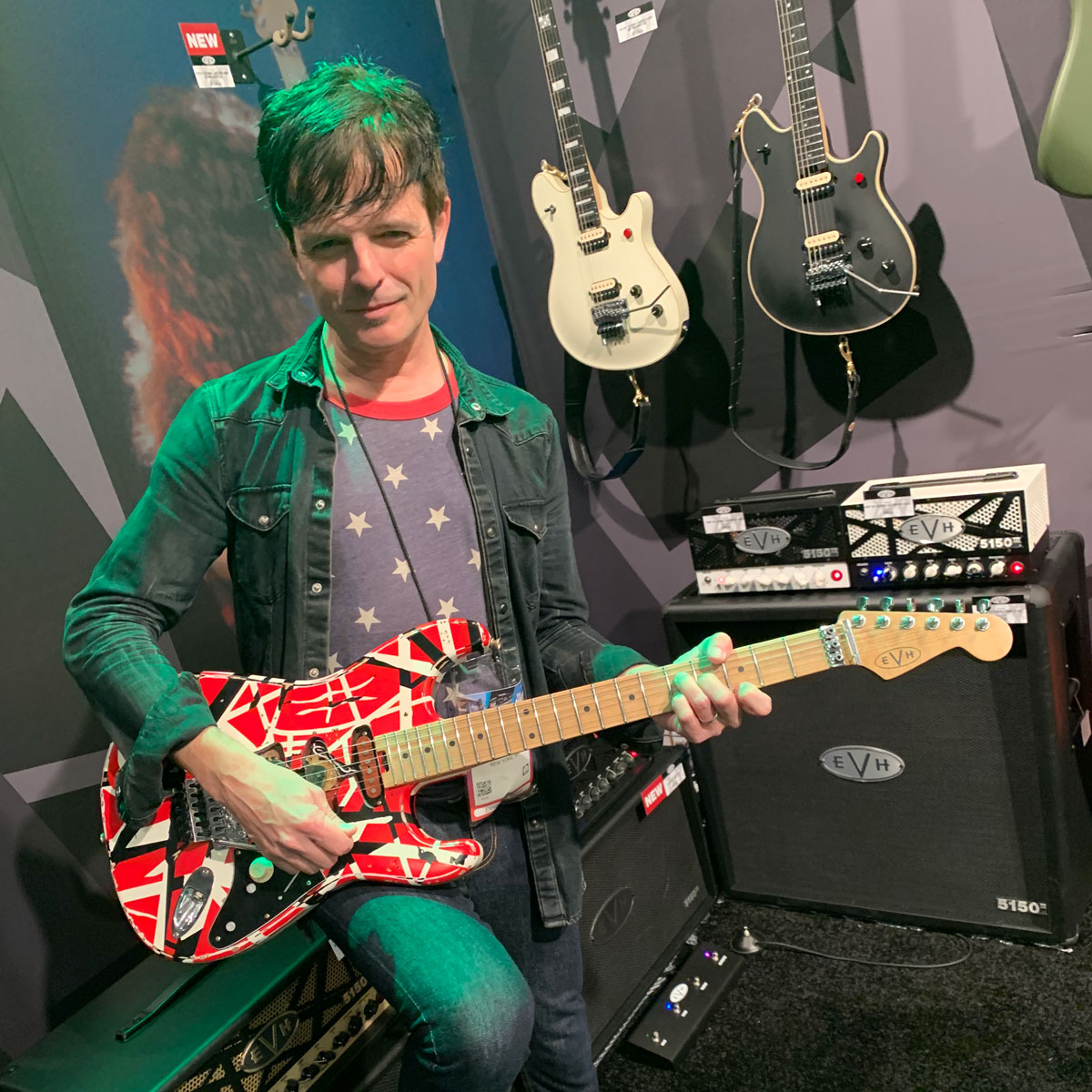
"Ernie Ball has been making some of the most durable, best-selling volume pedals longer than most guitarists reading this review have been alive - and the VPJR is a clever, space-saving pedalboard idea brilliantly executed."
Read more: Ernie Ball VPJR review
Best passive pedal
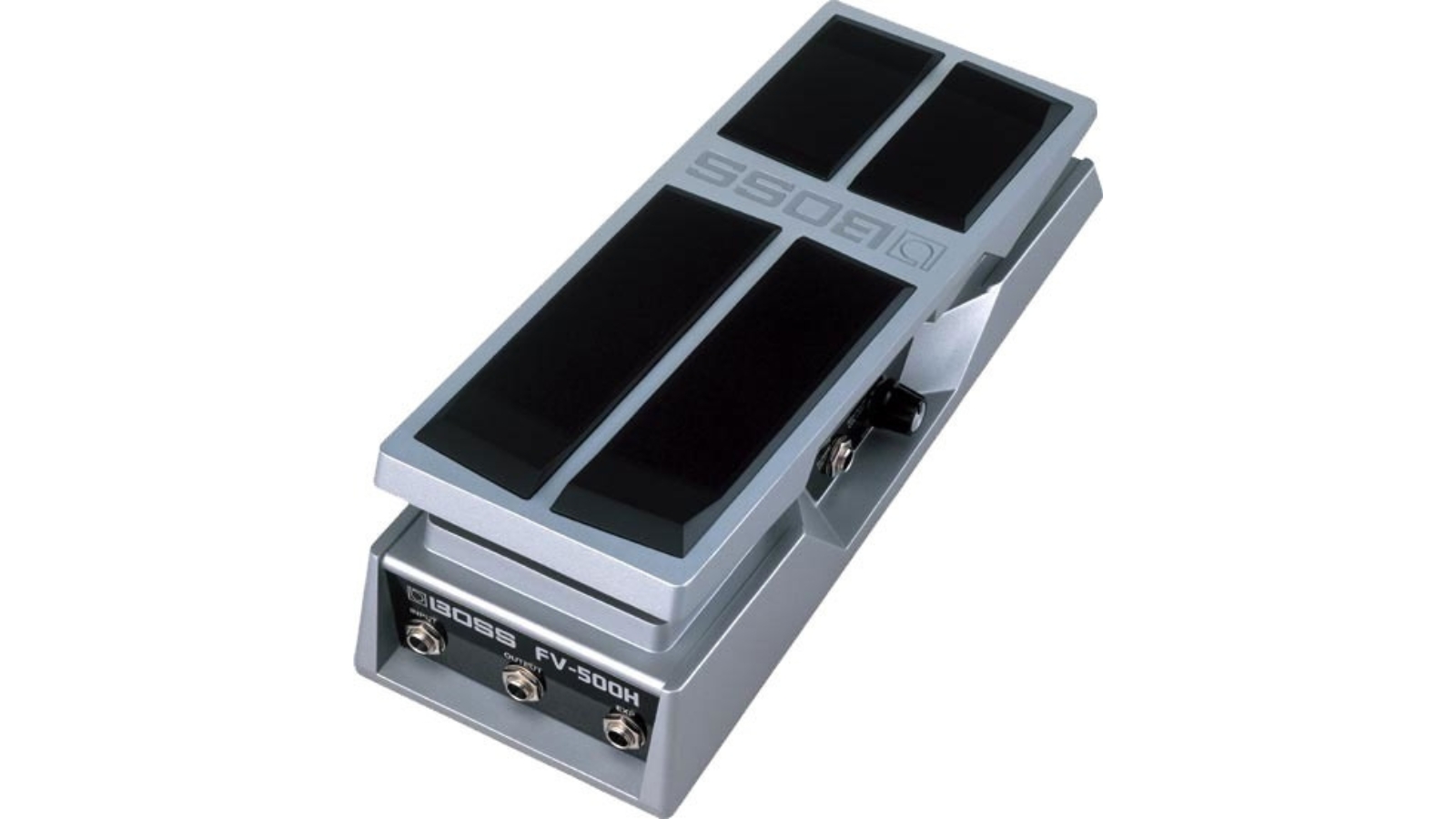
3. Boss FV-500H
Our expert review:
Specifications
Reasons to buy
Reasons to avoid
✅ Buy if you want a robust volume pedal that's built to last: The Boss FV-500H doesn't need a power supply and it's a rugged bit of kit for your 'board.
❌ Avoid if you just want a simple volume pedal: The Boss FV-500H does a lot, but you may want a more straightforward pedal.
If you’re short on pedalboard power supply outs, then the Boss FV-500H allows you to add a volume pedal to your setup without having to sacrifice a valuable power out. Housed in an aluminium die-cast body, as with all Boss pedals it’s a rugged bit of kit that will put up with plenty of abuse.
As well as handling volume duties the FV-500H doubles as an expression pedal, so you can use it to control swells on your favorite reverb pedal. It’s got an adjustable torque feature to control the feel too, accessible by turning the adjustment screw on the bottom panel with a Phillips screwdriver.
A separate tuner out is available, although depending on your setup, you may want to run your tuner in front of the pedal. To get the best out of a passive volume pedal, you need to ensure you have some kind of buffered pedal before it in the chain.
Most guitarists would use a buffered tuner here, although anything can suffice depending on how you run your particular pedals.
Best for pros
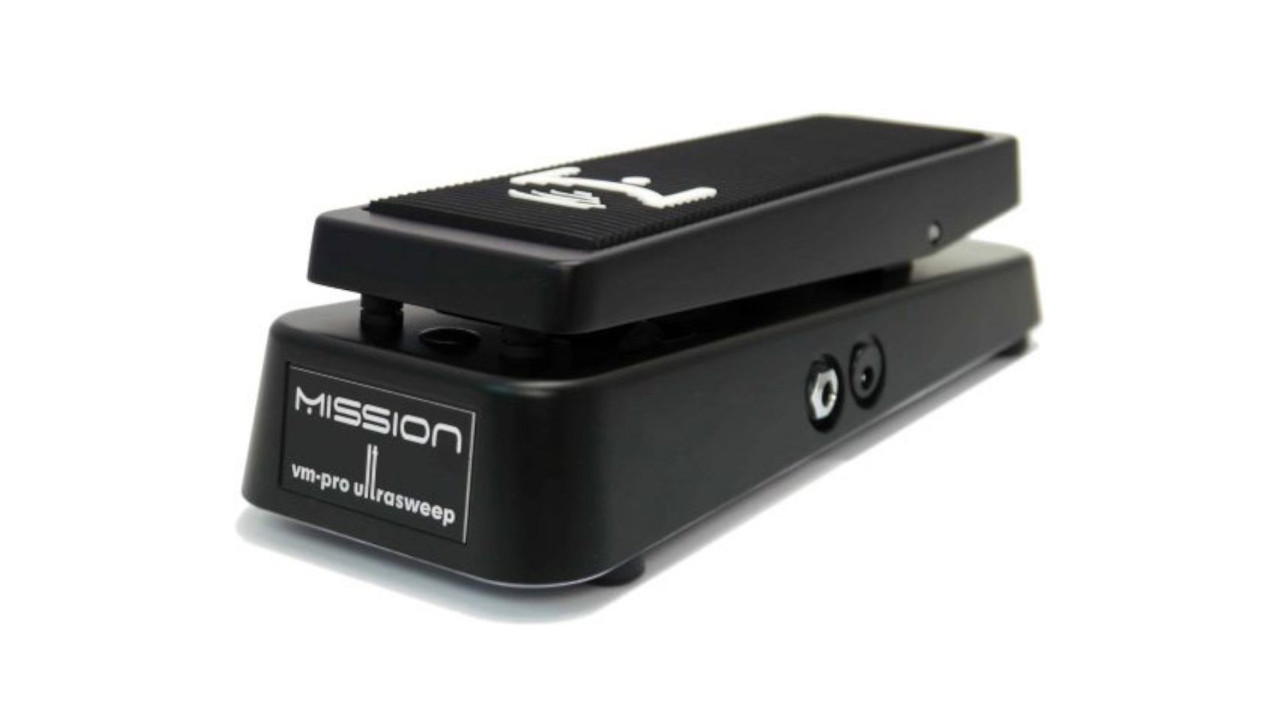
4. Mission VM-Pro
Our expert review:
Specifications
Reasons to buy
Reasons to avoid
✅ Buy if you want a slick pro-level pedal: The Mission VM-Pro is feature-rich and has a rock solid design.
❌ Avoid if you're on the lookout for a more wallet-friendly pedal: The onboard features and rugged build quality comes at a price.
If you’ve seen this sort of pedal with an M on the top on a pro’s board then there’s a good chance it’s this. The Mission VM-Pro is a professional volume pedal, built to withstand life on the road.
Aside from its incredible build quality and slick-feeling sweep when using it, this pedal has a ton of features that make it the pro’s choice.
Firstly, it’s got a high quality buffer on board, so if you’re running long cables, then this helps ensure you don’t suffer any sort of signal degradation.
It has a selectable output impedance too, which means that it can work with vintage fuzz pedals without any problems, plus there’s a switchable gain stage for use with high output active pickups and a sparkle switch to keep your top end intact when you roll the volume back.
While it’s not cheap, the Mission VM-Pro is an excellent volume pedal. It’s built extremely well, it’s great to use, plus it can work seamlessly in pretty much any scenario.
Best compact pedal

5. DOD Mini Volume
Our expert review:
Specifications
Reasons to buy
Reasons to avoid
✅ Buy if you want an easy to use pedal that'll save on pedalboard space: The tiny DOD Mini Volume is a hard-wearing pedal that'll fit into a busy 'board.
❌ Avoid if you think it's just a little bit too small: The smaller smaller treadle size isn't going to suit everyone.
If you’re like us and you’ve got too many pedals on your ‘board, then the DOD Mini Volume is the perfect choice for adding a volume pedal to your setup. Not only is it tiny, but it doesn’t require a valuable power supply out either.
We’ve got to say the DOD Mini Volume looks fantastic and whilst it’s very simple, it does exactly what you need it to. Despite the small treadle, it still feels like the full sweep of a regular-sized volume pedal, which is no mean feat from DOD.
Because of the increased resistance and smaller treadle size, this means you get a bit of a calf workout when using it over long periods of time, but you quickly get used to it.
A treble bleed circuit built into the pedal ensures there are no high-end losses when you ramp the volume down, making this a fantastic option for space-strapped players.
Most unique
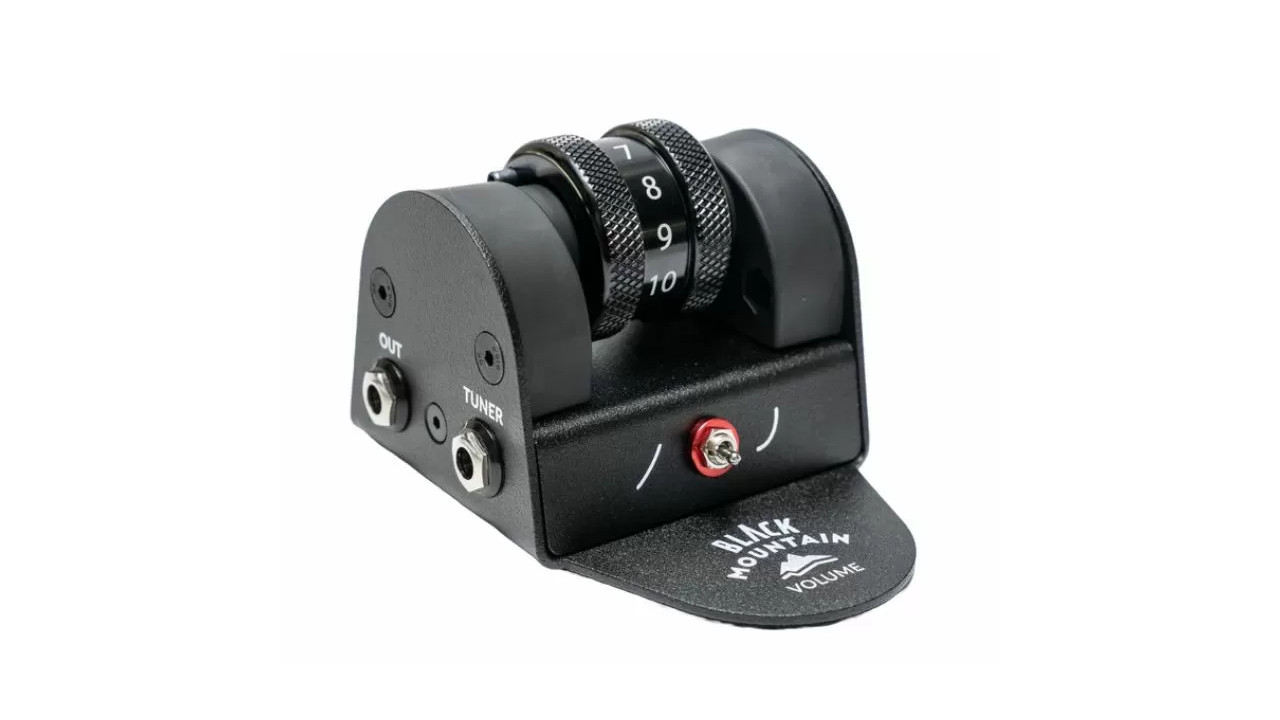
7. Black Mountain Volume Pedal
Our expert review:
Specifications
Reasons to buy
Reasons to avoid
✅ Buy if you want to stand out from the crowd: The Black Mountain Volume Pedal is a different take on the classic pedal, but it works remarkably well.
❌ Avoid if you have more traditional tastes: Using this pedal takes a bit of getting used to, and you might just prefer a normal volume pedal.
Turns out not all volume pedals adhere to the same sort of design. Here’s a really unique pedal that offers everything you’d need out of a volume pedal in a very different format.
Instead of the classic expression pedal design, the Black Mountain has a sort of wheel sat in a heavy-duty casing. You then roll that wheel with your foot. It does take a little while to get used to, probably because it is so unique. But, once you’ve got the hang of it, you’ll find you can operate it in slightly different ways depending on how you position your foot.
The build quality is excellent too; its design is nice and compact but it’s super sturdy and and you don’t feel hesitant to put all your weight on it when standing up playing.
It’s got two selectable tapers, allowing you to choose how the volume is adjusted. Linear mode gives you an even, uniform increase in volume as you turn it up, and the audio taper mode gives you a more gradual change at the start of the sweep and a more prominent one as you get towards the end.
Also try
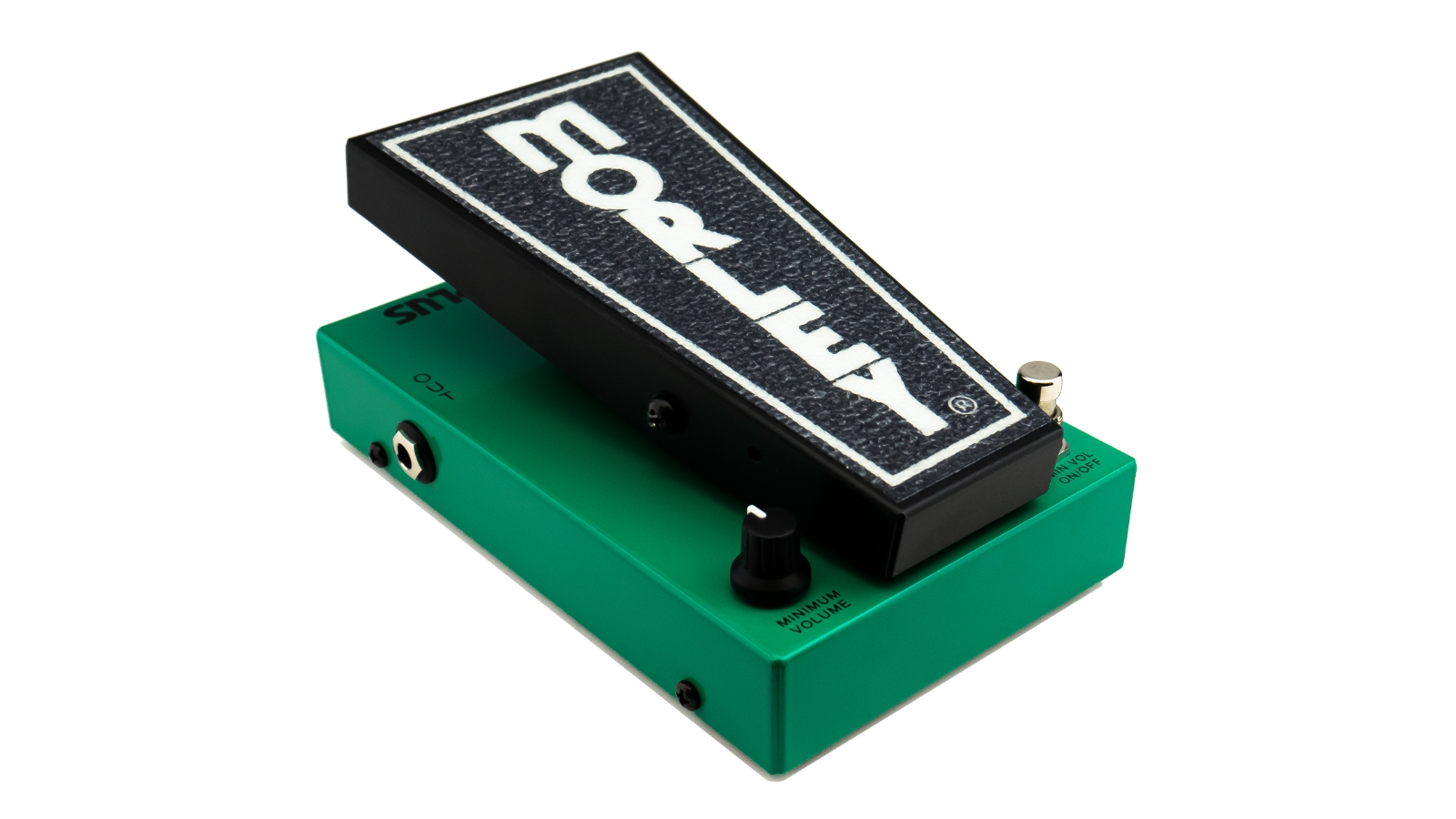
8. Morley 20/20 Volume Plus
Our expert review:
Specifications
Reasons to buy
Reasons to avoid
✅ Buy if you want a solid gig-ready volume pedal: This pedal is dependable in live situations - and it has a handy florescent logo so you can see it in the dark!
❌ Avoid if you want your pedal to have a few more bells and whistles: Unlike some pedals in this list, this one only controls volume.
The template for the Morley 20/20 Volume Plus is similar to their renowned wah pedals, with a triangular treadle that features controls at the heel end. It’s a design that works fantastically well, so it makes sense to do the same with their volume pedals.
The 20/20 Volume Plus is optical, so instead of a potentiometer to measure where the treadle is, it uses an LED and an LDR (light-dependent resistor) which means no moving parts that can fail. It also gives the Volume Plus an exceptionally smooth feel that’s perfect for those violin-esque swells.
A minimum volume knob lets you use it to control either the volume or as more of gain control, and there’s a handy minimum volume off switch that you can use as an instant boost.
The glow-in-the-dark logo on the treadle means you’ll never miss it on a dark stage, and we love the space-saving design too.
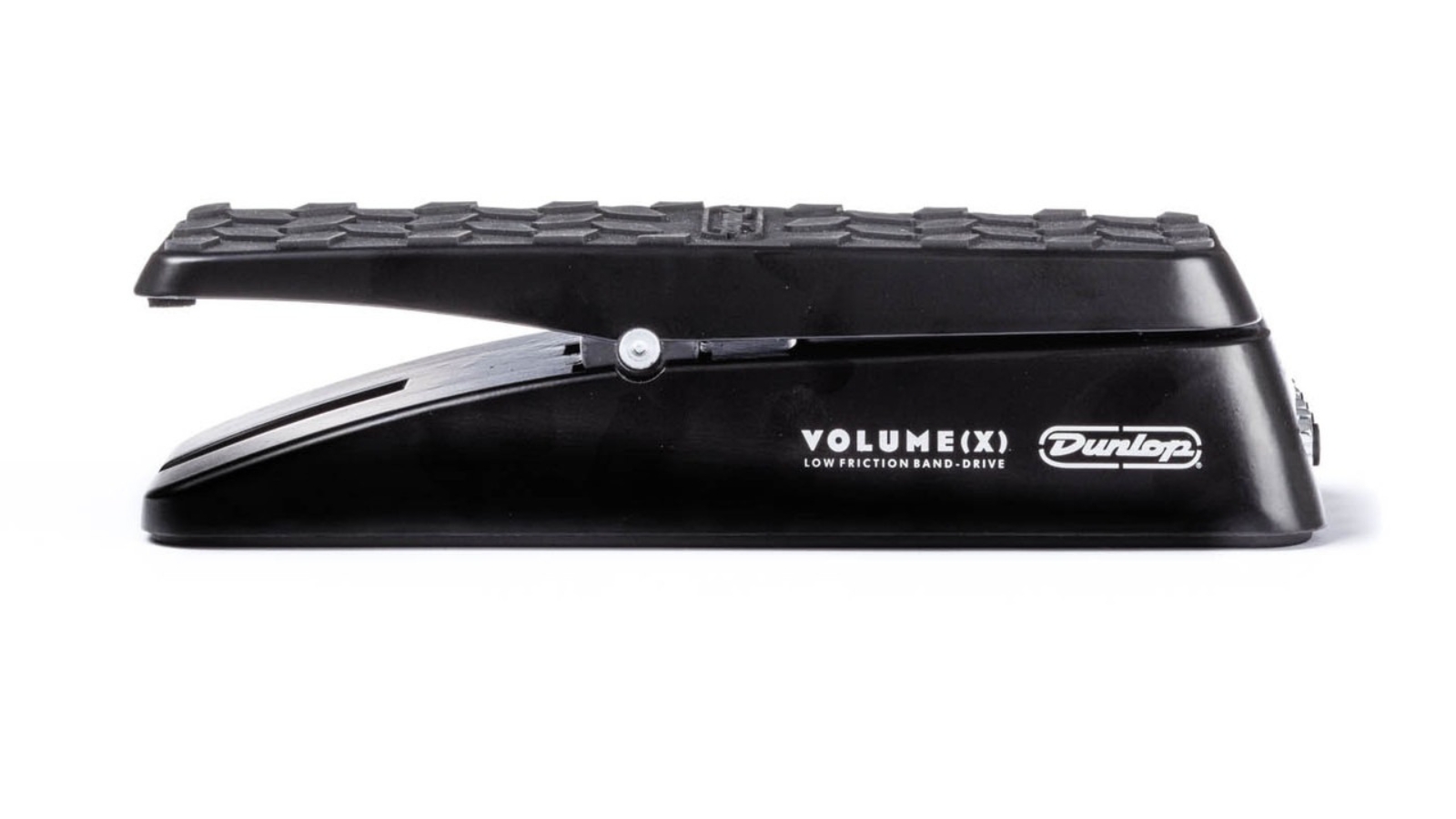
9. Dunlop DVP3 Volume X
Our expert review:
Specifications
Reasons to buy
Reasons to avoid
✅ Buy if you want a dual purpose pedal: The DVP3 Volume X doubles as a volume and expression pedal, so that might save you some cash.
❌ Avoid if you want an easy to use pedal straight out of the box: The switches here are a bit awkward to use at first, so bear that in mind.
Serving a dual purpose as a volume and expression pedal, the Dunlop DVP3 Volume X features the same rugged housing as their famed wah pedals. With plenty of functionality on offer, it’s a versatile bit of kit that can do a lot for your pedalboard.
The transition from silence to full volume is lovely and smooth, with a screw beneath the heel end of the casing to adjust the torque to your liking.
With the use of a TRS cable, you can use it to control any pedal with an expression input, making it great for manipulating delay times and creating reverb swells.
In expression mode you can reverse the heel-up and toe-down functions, adding an extra bit of flexibility you won’t find on many other volume pedals.
The minimum value for your volume is adjusted via an internal potentiometer which is awkward to access, but typically once you’ve set this you aren’t likely to need to do it again.
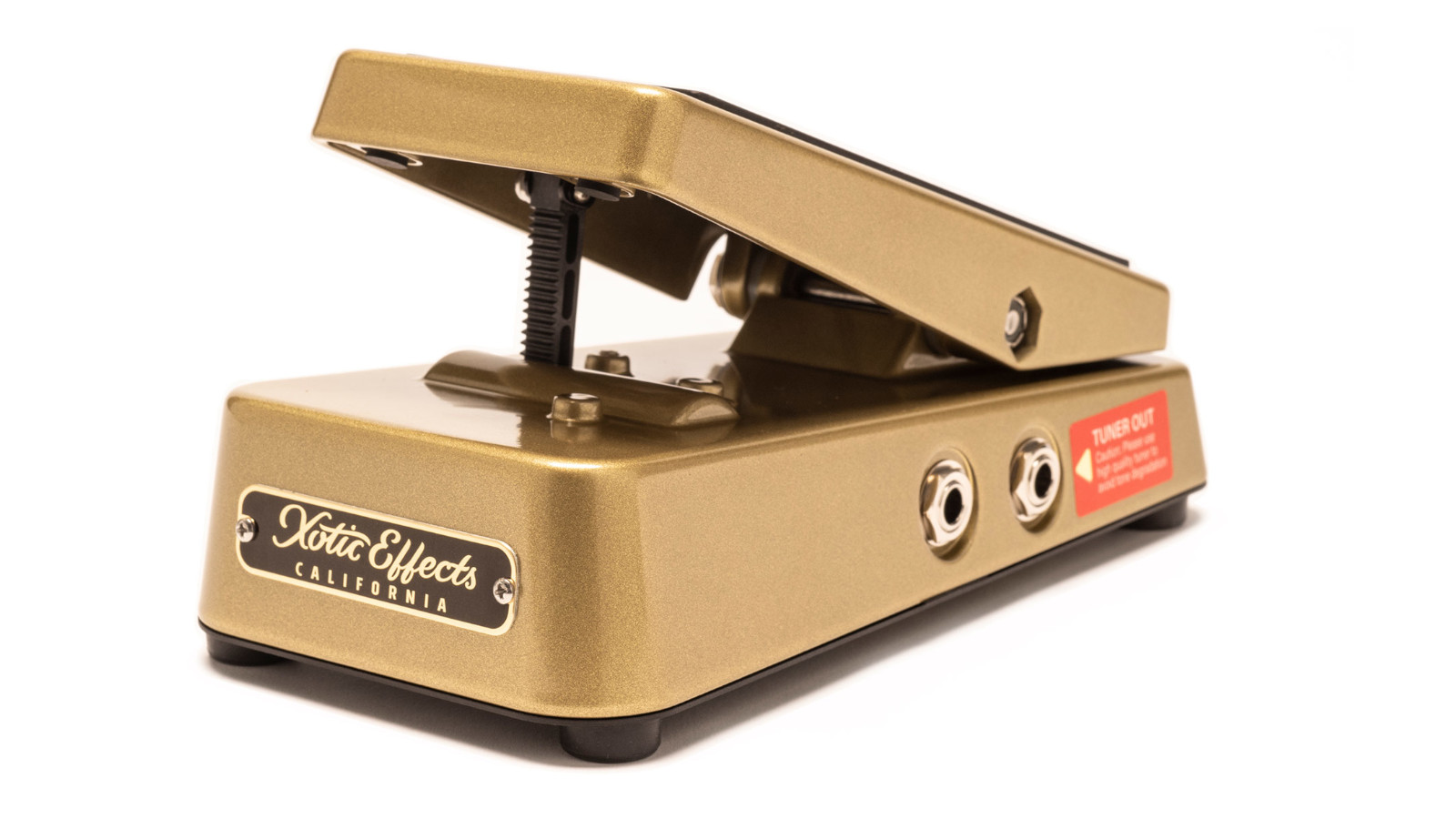
10. Xotic XVP-250K High Impedance Volume Pedal
Our expert review:
Specifications
Reasons to buy
Reasons to avoid
✅ Buy if you want one of the best built pedals around: The XVP-250K is celebrated for its hand-wired construction and all-aluminum chassis.
❌ Avoid if you want a pedal packed with features: There's not many extras on show here compared to other pedals on the list.
Xotic is well known for making high-end rocker-style pedals, with their range of wahs being among the best on the market, so it’s no surprise that their volume pedal is also a standout. The XVP-250K High Impedance volume pedal is designed for passive guitar pickups – active pickup users should check out the XVP-25K – with the intention of retaining supreme signal clarity.
Where the XVP-250K stands out is undoubtedly with its build quality, with hand-wired construction and all-aluminum chassis adding a level of class and quality that is hard to find in mass-manufactured pedals. The nylon pivot bushing and rack pinion design for the rocker action is durable, smooth, and super reactive to foot movements, which leaves you confident that you are in full control.
A dedicated tuner out is useful and, among other high-end competitors, it isn’t offensively expensive – however, it does lack some of the features of other rivals. For those looking for elegant simplicity in a superb package, this could be the pedal for you… assuming you’re a fan of the color gold.
FAQ
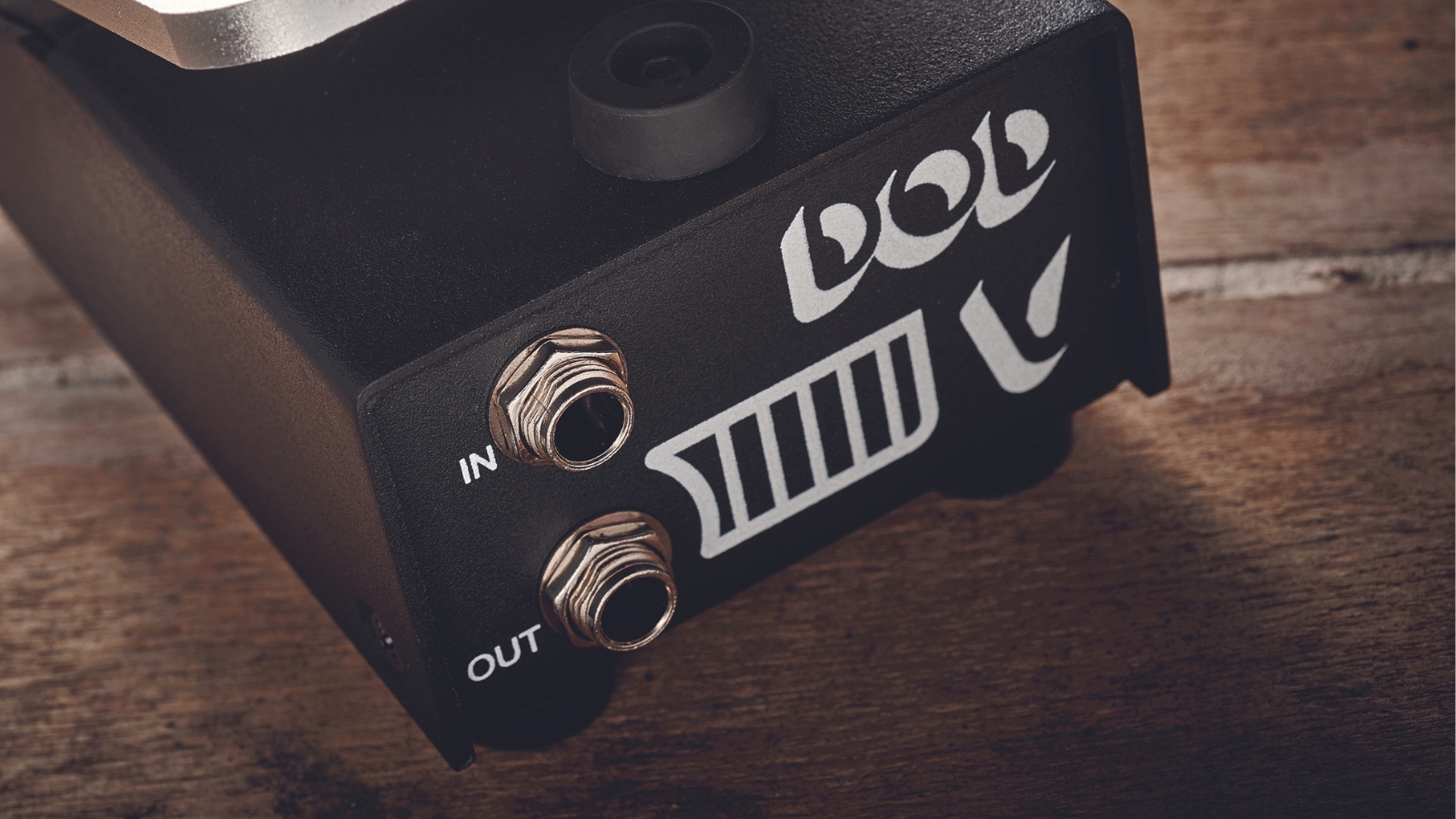
What is a volume pedal used for?
Volume pedals are pretty self-explanatory by name, offering the user the chance to control their guitar’s volume by rocking their foot backward and forward on a rocker pedal in real time. This can create musical moments of magic, allowing the user to conjure smooth swells that mimic bowed instruments such as the violin.
A volume pedal can also control your dynamics during a set. For specific musical moments – perhaps the final chorus of your song needs a bit more oomph – a volume pedal can add that little bit extra that makes all the difference. For lead guitarists, the ability to add an extra level of boost to their sound might be just what is called for in solo sections, helping push both your volume and your amplifier’s preamp that bit harder.
Of course, another thing you can do with a volume pedal is simply mute your guitar signal, which is really useful if you have silent sections in your music. This can also be achieved with a tuner pedal that mutes your signal; however, the volume pedal is a far more graceful solution.
Should I get a volume pedal or an expression pedal?
A volume pedal does the specific job of controlling your overall volume, whereas an expression pedal can theoretically change a parameter of any kind of effect. However, it requires another pedal to do this, and the majority of pedals may not have an expression pedal input. For example, Strymon’s BlueSky reverb pedal has an expression input that can be used to control the parameters of the pedal when you sweep the expression pedal, but you would not be able to do this on an Electro Harmonix Holy Grail.
If you have a pedal or multi-effects unit with an assignable expression input – the ability to assign an expression pedal to just about any of the pedal’s parameters – an expression pedal, in this instance, could provide the same effect as a volume pedal if assigned to the master volume.
However, bear in mind that this may not be quite as smooth as a dedicated volume pedal, which is designed specifically to fluidly alter your volume. Some volume pedals can double as expression pedals, so if you are unsure which you would prefer, these give you the best of both.
Do volume pedals need a power supply?
There are two types of volume pedals: passive and active. Passive volume pedals do not require external power and work mechanically by allowing or restricting the amount of signal that passes through them.
Active volume pedals do require external power, and this may be because they offer additional features such as integrated buffers, boost, or even built-in tuners. Typically, an active volume pedal will require 9 volts of power (or more), just like the majority of other pedals, and this can come from an external power supply or, in some cases, a battery.
Does a volume pedal affect tone?
Typically, of the two types of volume pedals (active and passive), it is passive pedals that have the potential to impact your tone more due to "tone suck", the process of signal loss when passing through an object that introduces impedance. The higher the impedance, the more likely this tone suck will be noticeable. Fortunately, the majority of passive volume pedals are designed to have low impedance to minimize any signal loss. Alternatively, "the suck" can be mitigated by adding a buffer into your chain before the volume pedal – some tuners, such as the Boss TU-3, feature a built-in buffer, so having that at the start of your chain will do the job perfectly.
Active volume pedals have the same potential of changing your tone as pretty much all other active effects pedals – the introduction of noise. If your effects chain is not grounded properly or you do not have isolated power supplies, you run the risk of introducing noise into your signal chain. The best active volume pedals are made with robust circuitry that shouldn’t generate much noise, but make sure you power these pedals with either their accompanying power supply, a battery, or a good isolated external power supply.
Ultimately, any additional pedal in your signal chain will have some effect on your tone – it doesn’t matter if they’re true bypass or buffered, active or passive. The best effects pedals take all the necessary actions to reduce any changes in your tone to unnoticeable levels, and the best volume pedals do this, too.
What are the best ways to use a volume pedal?
One of the best volume pedals can be an incredibly useful thing to have in your toolkit as they can be used either for expression or just straight functionality.
Volume pedals can let you create lovely-sounding swells. Strike a chord with the volume down and steadily bring the volume back in and you’ll hear a really nice rising of the chord you’re playing. Pair this with reverb and delay and you can get some really beautiful sounds; almost sounding like a keyboard or strings.
They can also be used as a kill switch. If you don’t have a tuner in your set-up, or you’ve got it set as always on, a volume pedal can be the ideal way of killing your signal when you need to – guitar changes, or gaps between songs etc.
Volume pedals can be used as a boost too. Adjust your pedal so it’s not at full volume for your rhythm sound, then kick it up to full for your solos. You can do a similar thing if you’re switching between guitars that have different outputs too.
Does the size of the pedal matter?
Unlike other pedals where a smaller casing shouldn’t make much of a difference, a volume pedal, or indeed any expression pedal, can feel very different depending on its size.
Getting good contact between your foot and the volume pedal is crucial in being able to use it effectively. If you’re looking to use it for volume swells, or to find sweet spots for rhythm and lead etc, a bigger pedal might be easier to use as there’s more surface area for your foot to control. That’s not to say you can’t use a small one effectively, but it’s definitely worth considering, or even trying one out in person if you can.
What are the differences between a volume pedal and expression pedal?
A lot of people wonder what the difference is between a volume pedal and an expression pedal. They often look similar, if not the same, but an expression pedal can control any number of parameters and requires an external device (amp, another pedal etc) to determine what that parameter is. The expression pedal is then linked via a cable and can control what you have selected.
A volume pedal on the other hand just controls volume and works on its own, in a similar way to the control on your guitar, except you use your feet.
Where do you put a volume pedal in your signal chain?
Common discourse says that you place a volume pedal at the start of your chain, and I’d be inclined to agree. Doing this essentially lets you use your volume pedal in the same way as you would the volume knob on your guitar. If you’ve got reverb or delay at the end, you’ll still get the tails when you back off the volume, and it means that your signal interacts with overdrives and boosts in a more traditional way.
That said, there are no right answers – if something else works for you, then go for it! Some people like to use them at the end as like a master volume for their signal before it hits their amp. With pedal placement, it’s always worth experimenting.
Additionally, you might want to place a pedal with a buffer (like many tuners) in front of a passive volume pedal. It might not be necessary, but it could improve performance. Again; experiment and try things out to see what works within your set-up.
How we choose the best volume pedals
At Guitar World, our writing team of experienced musicians are deeply entrenched in the world of guitar gear. With years of playing and rigorous product testing behind us, we bring a depth of understanding that comes from real word experience with musical equipment. Our dedication spans every facet of the musical journey, from live performances to studio sessions, forming the basis for our expertly curated recommendations across various categories.
In the pursuit of identifying the best volume pedals in the market, we embark on a meticulous selection process. This involves a fusion of practical experience, insights gleaned from user reviews, and extensive deliberations within our editorial team. This comprehensive approach ensures a well-rounded evaluation, providing a trustworthy guide for you to base your next purchase on.
As passionate guitarists, our primary goal is to guide fellow players in discovering gear that perfectly aligns with their needs. Factors such as budget considerations, features, and the pedal's usability are all carefully weighed to compile a list that confidently represents the best volume pedals in the current musical landscape.
Why you can trust us
☑️ A global audience of 3.8 million guitarists monthly
☑️ 1,200+ reviews on GuitarWorld.com
☑️ 30+ years of product testing at Guitar World
Guitar World boasts over 44 years of expertise and stands as the ultimate authority on all things related to guitars. The magazine and website feature expertly written gear round-ups and top-quality, authoritative reviews penned by a team of highly experienced industry professionals.
Guitar World's inaugural print issue hit the shelves in July 1980, and ever since, it has been captivating players and enthusiasts with engaging lessons, insightful interviews with the biggest guitar heroes, and priceless buying advice for newbie players.
Furthermore, GuitarWorld.com continues this legacy online and serves as the hub of the world's foremost authorities on guitar playing. The site not only hosts content from Guitar World but also showcases articles from respected publications such as Guitarist, Total Guitar, Guitar Techniques, and Bass Player. With a reach extending to 3.8 million players each month, GuitarWorld.com is a go-to destination for guitar fanatics globally.
Meet the experts

Matt is a Junior Deals Writer at Guitar World and has been playing guitar as his main instrument for well over 20 years. He also plays drums, bass, and keys – producing out of his home studio in Manchester, UK. He has previously worked for Dawsons Music, Northwest Guitars, and freelanced for various magazines and blogs, writing reviews, how-to's, and features.

Connor is a contributor to Guitar World and MusicRadar. Having been a guitarist since the age of 10, he's played bass and guitar in bands across the South West of England. He has a background in audio engineering, having worked in some of the UK’s best studios including Rockfield and Invada, and has a passion for recording guitar. He is always keen to discover the greatest gear for capturing tone, be that microphones, audio interfaces or cab simulators.

After spending a decade in music retail, I’m now a freelance writer for Guitar World, MusicRadar, Guitar Player and Reverb, specialising in electric and acoustic guitars, bass, and almost anything else you can make a tune with. When my head’s not buried in the best of modern and vintage gear, I run a small company helping musicians with songwriting, production and performance, and I play bass in an alt-rock band.
Latest updates
30/07/25: The guide has been updated to include two new products: The Mission Engineering VM-Pro and the Black Mountain Volume Pedal. Each volume pedal featured in the guide now has "At a glance" panels, while the FAQ section has been expanded to include new sections. We've also added a section explaining how we chose the pedals featured in the guide.
Read more
You can trust Guitar World
- Improve your live show with the best looper pedals
- The best multi-effects pedals will replace your entire rig
- Find another essential utility with the best compressor pedals
- Dirty up your tone with the best distortion pedals
- Check out the best fuzz pedals for saturated tones
All the latest guitar news, interviews, lessons, reviews, deals and more, direct to your inbox!

Matt is a Junior Deals Writer here at Guitar World. He regularly tests and reviews music gear with a focus on guitars, amps, pedals, modelers, and pretty much anything else guitar-related. Matt worked in music retail for 5 years at Dawsons Music and Northwest Guitars and has written for various music sites including MusicRadar, Guitar Player, Guitar.com, Ultimate Guitar, and Thomann’s t.blog. A regularly gigging guitarist with over 20 years of experience playing live and writing and recording in bands, he's performed everything from jazz to djent, gigging all over the country in more dingy venues than you can shake a drop-tuned guitar at.
